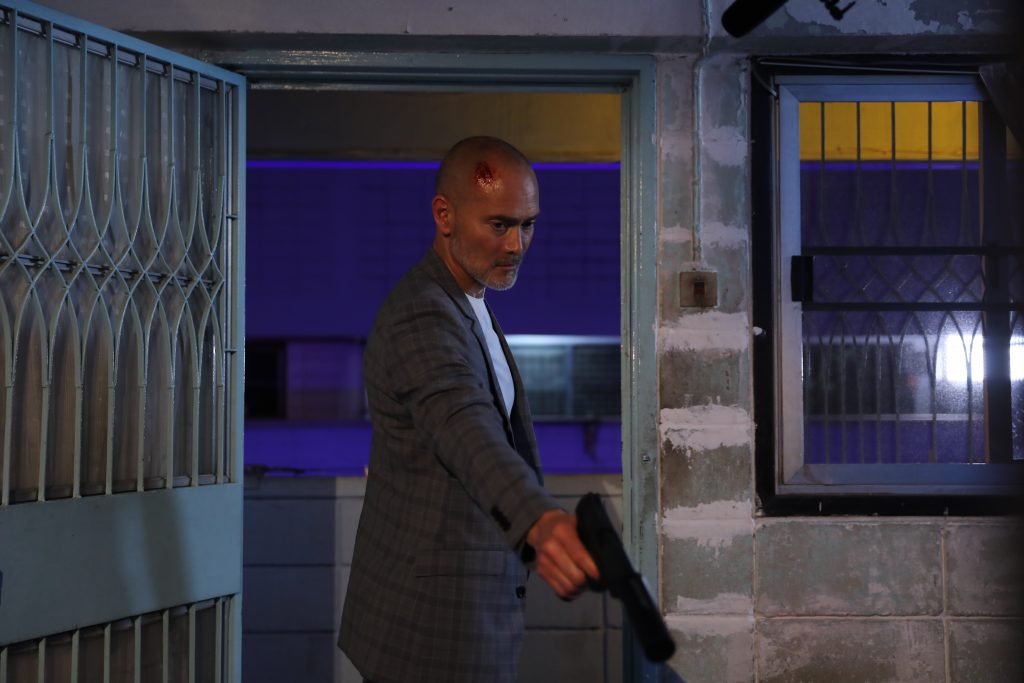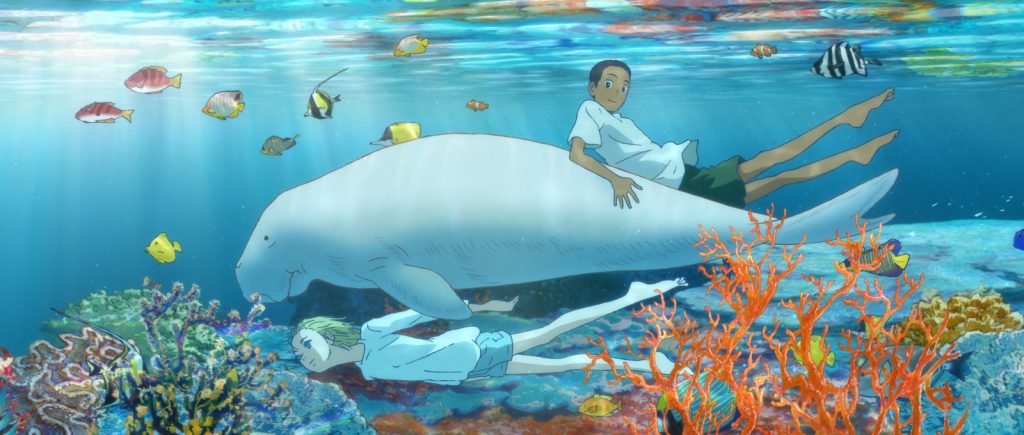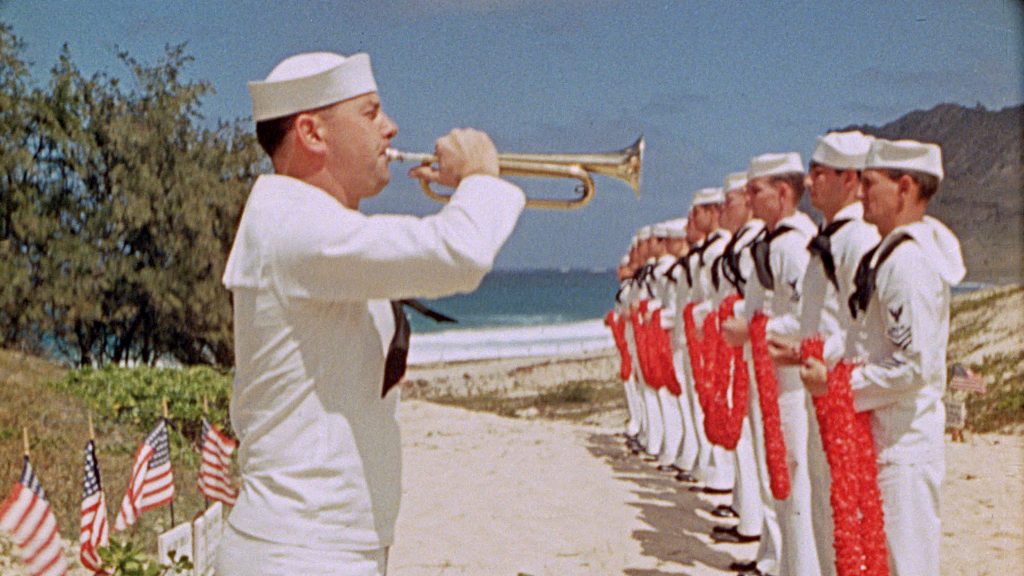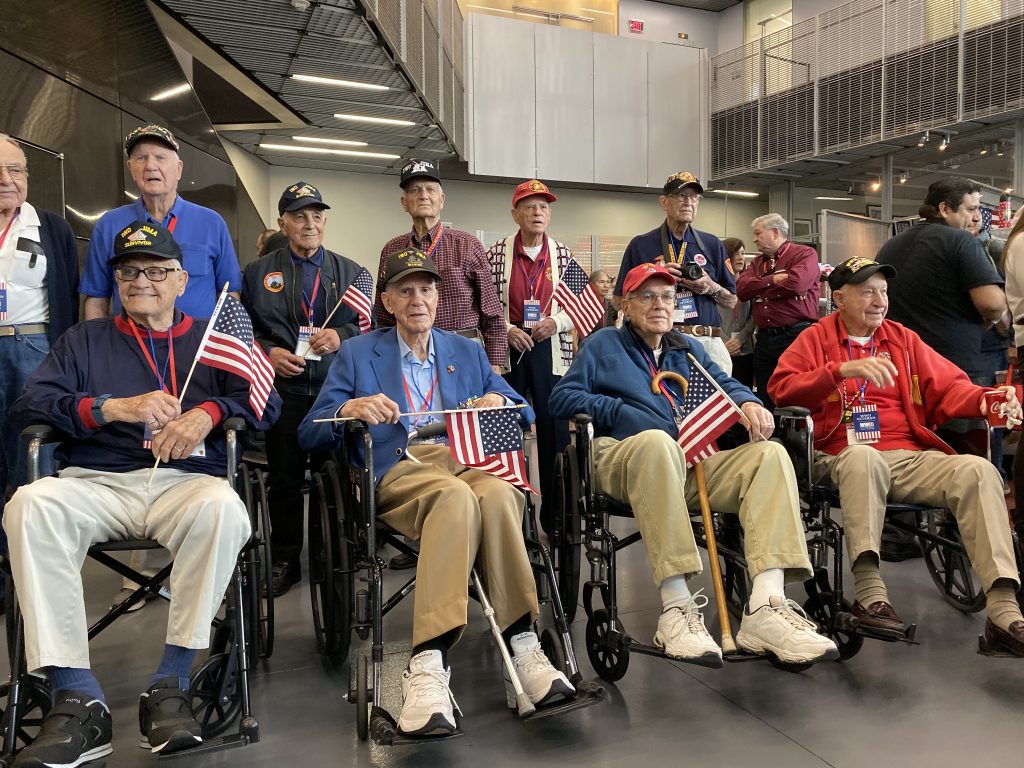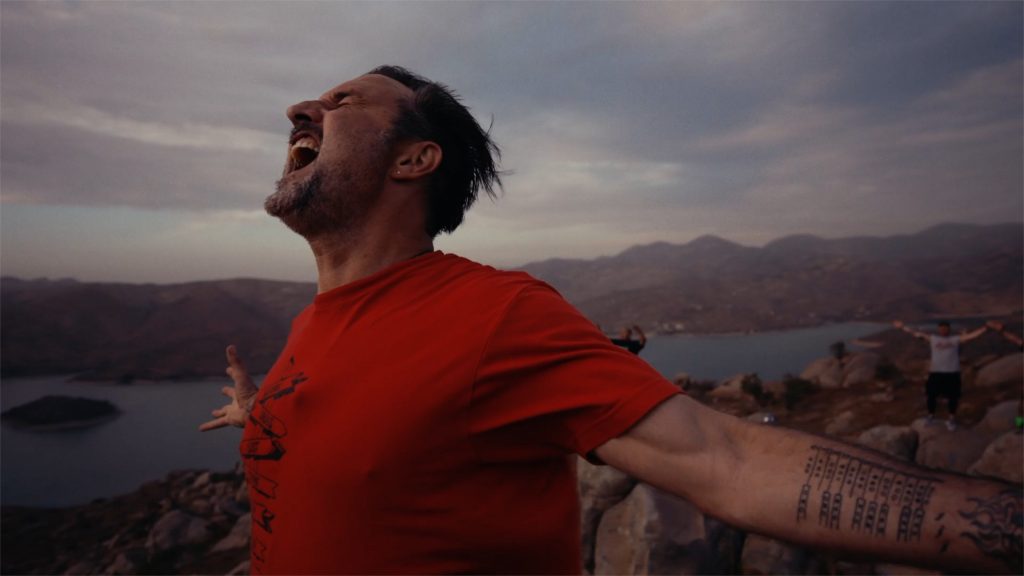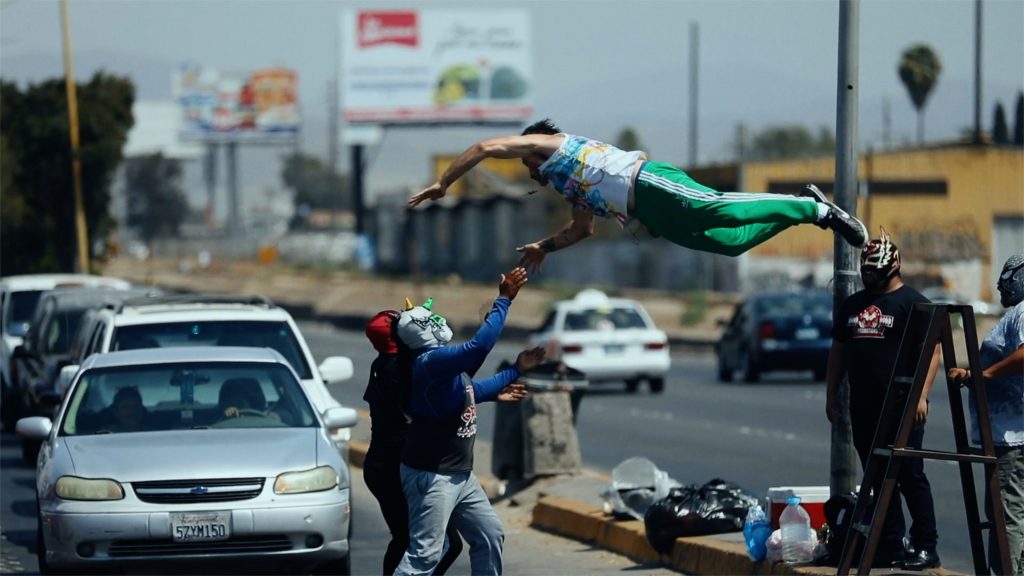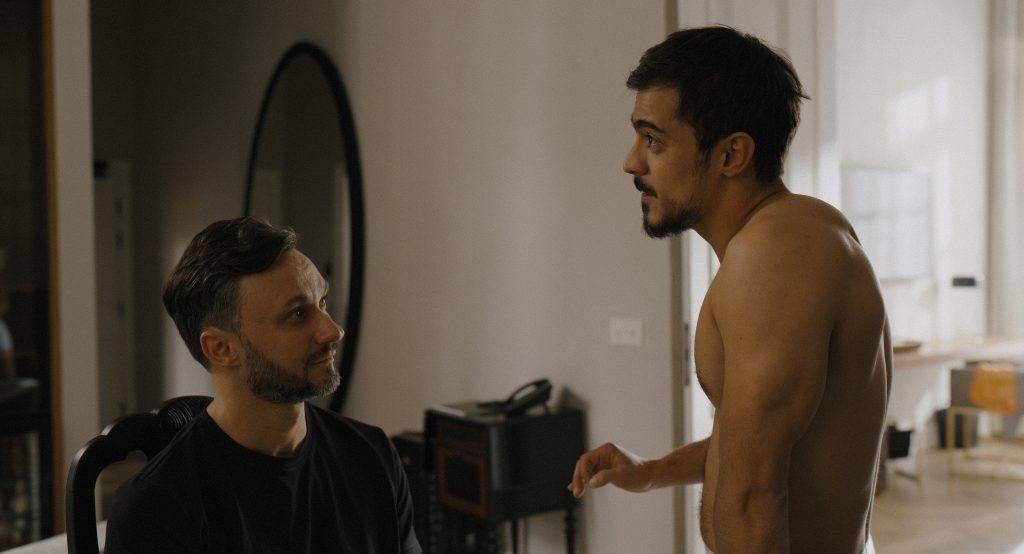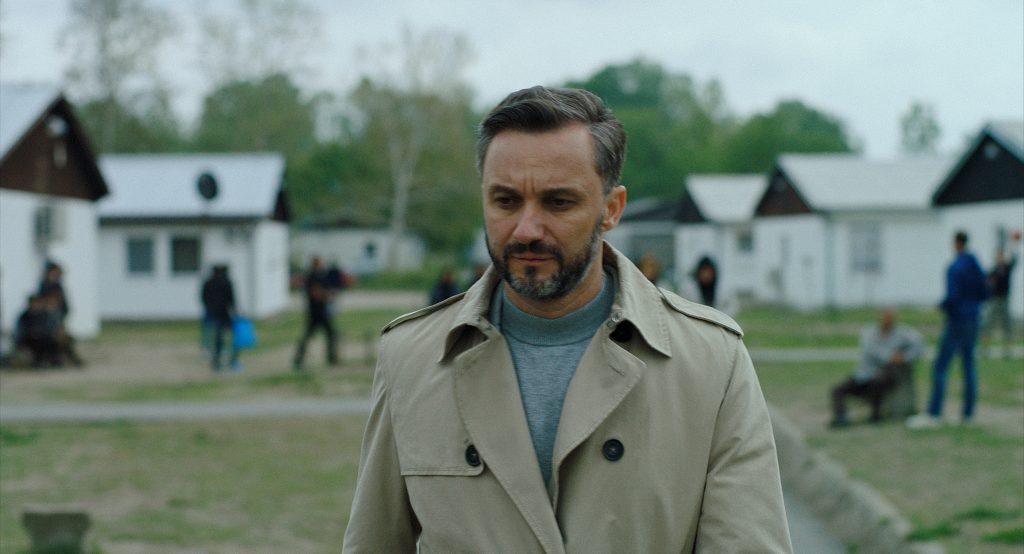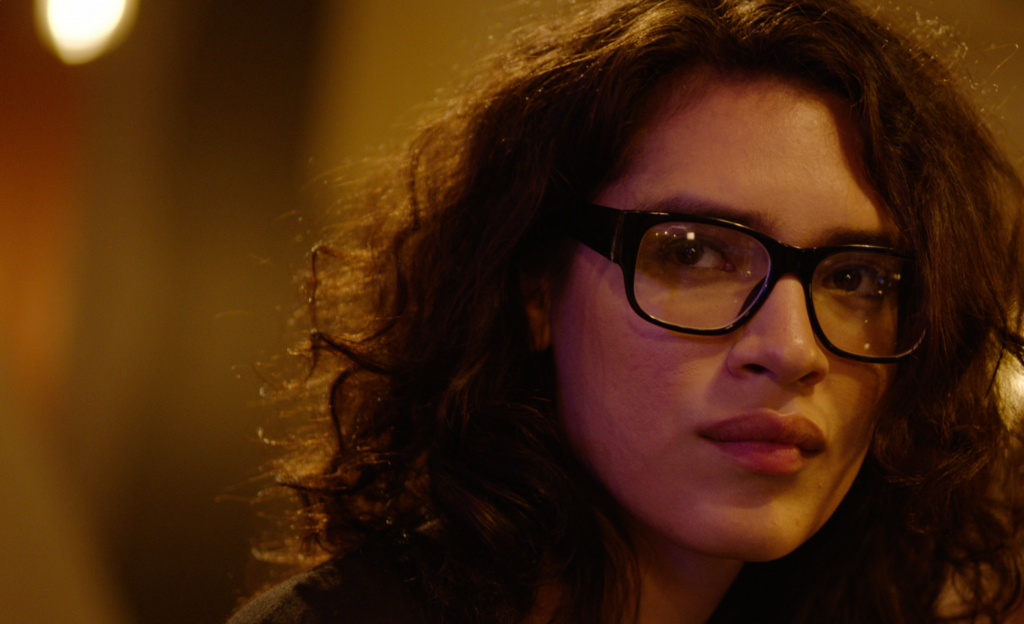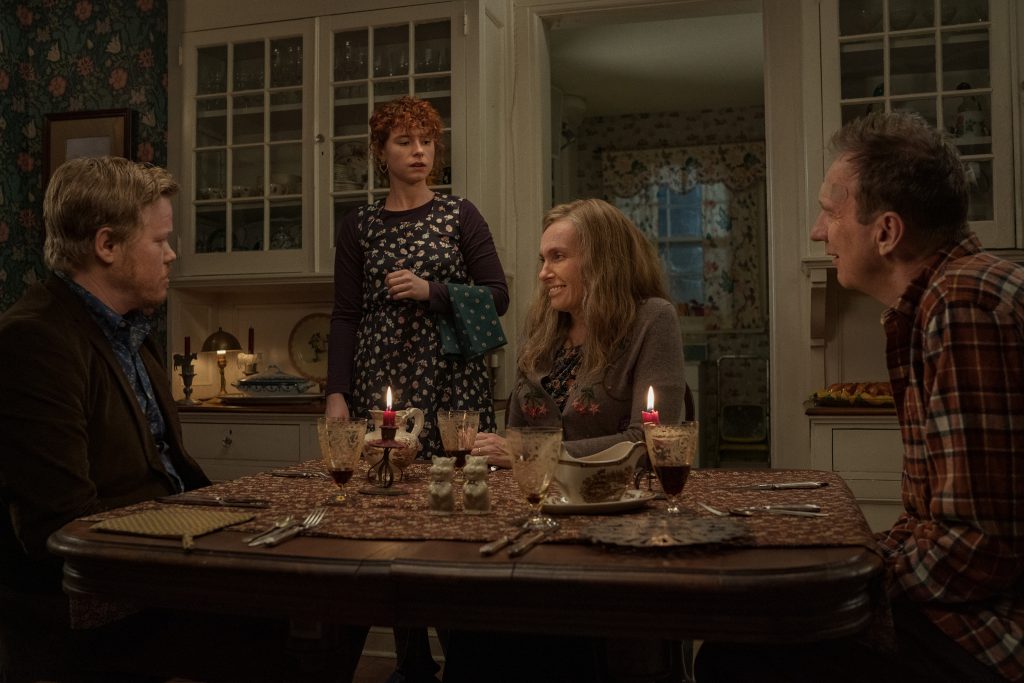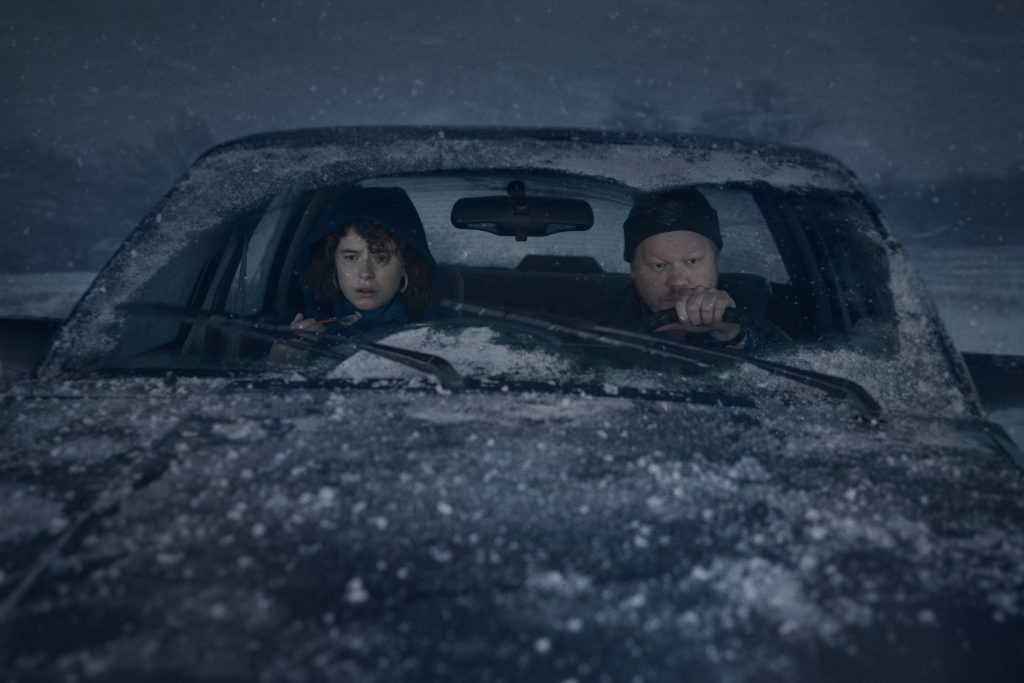September 3, 2020
by Carla Hay

Directed by Hubert Sauper
Spanish and German with subtitles
Culture Representation: Taking place in various parts of Cuba, the documentary “Epicentro” features a group of Latino and white people from the working-class, middle-class and upper-class discussing Cuba’s past and present issues with colonialism and government rule.
Culture Clash: Most of the Cubans interviewed in the documentary have negative opinions of countries that have tried to take over and oppress the people of Cuba.
Culture Audience: “Epicentro” will appeal mainly to people who don’t mind the type of documentaries that are more of a “snapshot” of a culture, rather than an in-depth investigation.

The documentary “Epicentro” is exactly what it appears to be: director Huber Sauper went to Cuba for several days and interviewed Cuban residents and some tourists about what they think about Cuban history and Cuban culture. It’s not a definitive documentary on contemporary Cuba, but it’s a very good snapshot of the thoughts and feelings of a sampling of people who happened to be filmed for this documentary.
One of the aspects of “Epicentro” that is apparent from the beginning is that the documentary does not have the usual format of identifying interviewees by showing their names on the screen as they are being interviewed. The names of the documentary’s participants are listed in the end credits, but a lot of viewers who actually read the end credits might not know who is who, unless they paid attention to which of interviewees had their name called out to them by someone else.
By not identifying the interviewees by their names in the the typical documentary way, viewers will feel that a lot of the people they’re watching are anonymous. And that might annoy or intrigue people. It will annoy people who are curious to know that names of who’s speaking. It will intrigue people who don’t care to know the identities of the people speaking
For example, there’s a slightly drunk American tourist shown in a bar, as he rambles in a joking manner that planting an American flag somewhere doesn’t always mean that great things are going to happen there. He names the moon as example, by saying that the moon hasn’t been that great since the American flag was planted there. “We have to make the moon great again,” he snickers in an obvious nod to the “Make America Great Again” political slogan used by Donald Trump and Ronald Reagan.
It’s a scene like this that will make people wonder: “Who is this guy? Why should we care what he thinks? Is he just some random tourist who’s just spouting gibberish in a drunken moment? And why is this in a documentary about Cuba, since what this guy is saying is really someone that anyone can spew after a few drinks at a bar?”
The more that “Epicentro” goes on, the more it becomes apparent that director Sauper doesn’t want viewers to think too much about the identities and personal backgrounds of the people interviewed in the documentary. The people who made it into the final cut of this film all have something to say, in one way or another, about colonialism and patriotism and how they lead to cultural conflicts when one country wants to rule over another.
Cuba has been a Communist/socialist country since 1959, and under the rule of the Communist Party of Cuba since 1965. The people of Cuba have experienced countries such and Spain, the United States and the former Soviet Union trying to dictate what type of government should rule in Cuba. And this political colonialism is still a very sore subject with Cubans.
In one of the first scenes in “Epicentro,” a man wearing a top hat and tuxedo is giving a video presentation to a roomful of about 50 Cuban children who are about 7 to 10 years old. In the video, Theodore Roosevelt and his Rough Riders are shown arriving in Cuba to establish a “brotherhood” with the Cuban people. The video also shows the American flag is unfurled establish freedom in Cuba. The children scoff at the video and say that it’s all a lie.
There are two Cuban girls (about 9 or 10 years old) who are close friends and whose interviewed segments are shown throughout the film: Leonelis Arango Salas and Annielys Palladito Zaldivar. They both have a strong sense of Cuban history, as they speak out against racist colonialism and talk about how the Spaniards had black slaves in Cuba. “No one should be treated as if they’re trash,” says one of the girls.
Salas, the more extroverted friend, who wants to be an actress and singer. Both girls also have an interest in dancing, as they are shown participating in a tango class with other kids their age. The girls’ family backgrounds aren’t really explained or shown, although it’s obvious that they are underprivileged, based on how they can’t afford certain things (like family vacations or certain toys) that other kids can take for granted. It’s mentioned that Salas’ father has been absent from her life for the past three years.
Salas is also being mentored in her showbiz goals by actress Oona Castilla Chaplin, who is shown in the movie giving Salas advice and showing the Charlie Chaplin movies “The Great Dictator” and “The Gold Rush” to a group of young kids. Oona also rehearses a “mother/daughter” argument with Salas, including them slapping and hitting each other. It looks so realistic that it almost seems like like it’s not a rehearsal but something that was unscripted.
Oona is the granddaughter of Charlie Chaplin and the great-granddaughter of playwright Eugene O’Neill. She is best known for playing Varang in the 2009 “Avatar” blockbuster movie and its sequels. What exactly was doing in Cuba and how did she end up involved with teaching kids about acting? “Epicentro” doesn’t say. It’s one of many examples of how the movie treats its subjects with a raw cinéma vérité style.
It’s as if the filmmakers took this approach to the people who are interviewed for the film: “We’re just passing through. We don’t need to know your life story. Just talk about what you want and we’ll film it.” “Epicentro” director Sauper took such a hands-off approach that when one young woman he interviews on the street can’t think of a word that knows, she ask him for helping in saying the word, but he can be heard off-camera saying that he doesn’t want to put words in her mouth.
The Cuban natives all express a sense of pride in their country, but they have mixed feelings about the United States. On the one hand, they love American culture. On the other hand, they have a real hatred for American politics and perceive the United States as a political bully to other countries. Donald Trump is mentioned often as someone who is intensely disliked by Cubans, no doubt because of his presidential administration’s embargo on Cuba. Even the little kids in the documentary don’t like Trump, who’s called “mean” and “racist” in the documentary. One of the little girls says, “Trump cares about nobody. He has no feelings.”
However, the Cubans in the documentary express a lot of admiration for American pop culture. An unidentified man says in the film: “Hollywood has won the cultural war.” An woman in her late 20s or early 30s says that her dream one day is to go to Disneyland. Why? She’s seen photos of Disneyland on Facebook and “everything looks beautiful … like in old fairytales. This is, for me, the American Dream.”
And the Cubans also express wistfulness or envy when it comes to all the new technology and freedom of speech that Americans get to have and take for granted. One woman interviewed on the street expresses some paranoia when a man who’s passing by asks her what she’s filming and what she’s discussing. She assures him that she’s saying nothing but good things about Cuba. When the man is out of hearing range, she half-jokingly says that if she’s not careful about what she says, she might get killed.
There’s also a lot of lingering and ongoing resentment that native Cubans have toward tourists. The documentary shows a Cuban man hanging out in a bar who says he grew up in a family who worked at a hotel and has this opinion of visitors who come to Cuba: “Tourists are human beings in their worst form … Tourism devours the future.” His perception of tourists is that they are usually loud, obnoxious and have a superior attitude toward Cubans.
The boundaries between the “haves” and “have nots” in Cuba are also defined by skin color, as the documentary shows that the dark-skinned people in Cuba tend to live in the worst poverty, while the wealthiest people in Cuba tend to be light-skinned Latinos or white. Meanwhile, the documentary shows that the tourists at luxury hotels in Cuba are almost always white. A taxi driver says on camera that the luxury hotels in Cuba were “created by the Mafia.”
There’s a scene in “Epicentro” when director Sauper (who does not appear on camera) breaks the wall of being an objective documentarian by staging some scenes for the movie. He brings Salas and one of her young male friends to the Parkhotel Central in Havana, so that they can swim in the pool. He also buys them dessert. The kids have never experienced this type of upscale hotel before, and it’s obvious that Sauper wanted to do something nice for them and put it in his documentary.
The young children who are interviewed (Sauper calls the children “little prophets” in the “Epicentro” production notes) have so much screen time in the documentary, that it’s obvious they were Sauper’s favorite people to film for the movie. There’s a scene in the movie where an American photographer is taking candid photos of a poor street kids (a boy who’s about 6 years old), who asks the photographer for something in return. The photographer gives him a pen, which the boy happily takes and starts playing with the pen as if it’s a toy.
The photographer comments on the poverty-stricken people in Cuba: “The conditions they have here are pretty tragic. But I guess under certain circumstances, you have no choice. It’s kind of crazy?”
There are also some random scenes in the movie. A man who appears to be in his 60s (who’s identified in the end credits as Hans Helmut Ludwig ) is shown tango dancing with a younger woman. Ludwig shows up later as a special guest instructor in the tango class of the young children.
Cuban animation director Juan Padrón is shown talking about how he did research on Roosevelt and the more he found out, the more he knew that the Rough Riders image was fake and a lot of the history that’s taught about Roosevelt’s relationship with Cuba was a myth. It’s widely perceived by the people in the documentary that the Spanish-American War in 1898 was under the guise of the U.S. trying to help liberate Cuba from Spain when the U.S. actually wanted to conquer Cuba.
The documentary was also filmed at least partially in November 2016, because “Epicentro” includes the breaking news about the death of Fidel Castro and the country’s subsequent mourning and tributes to Castro. The people interviewed in the documentary don’t express feelings one way or the other about how their lives might change is under post-Fidel Castro leadership. However, they do think that another event in November 2016 (the U.S. presidential election) has had more of a negative effect on their everyday lives.
“Epicentro” is not the kind of people will enjoy if they’re looking for a documentary that has a tightly focused story. Numerous unidentified people are interviewed in the movie and are not revisited. And the only real consistency is that the documentary keeps coming back to showing Cuban children. It’s as if the message of the movie seems to be: “Listen to what these kids are saying because they are the future of Cuba.”
If people are curious about what a relatively small sample of Cubans are thinking and what life is like in Cuba since the Trump-administration embargo against Cuba, then “Epicentro” is worth a look. There’s a lot of raw “shaky cam” footage, but some of the outdoor cinematography is stunning. “Epicentro” isn’t so much a wide-ranging documentary as it is a compilation of random individuals in Cuba who share their thoughts for this movie. What they have to say is much more revealing about Cuba than filtered news or a political speech.
Kino Lorber released “Epicentro” in select U.S. cinemas on August 28, 2020.

